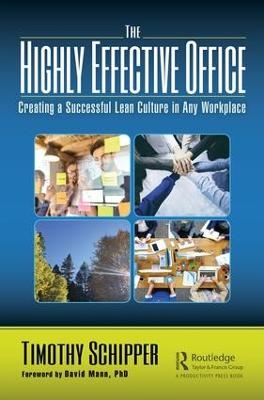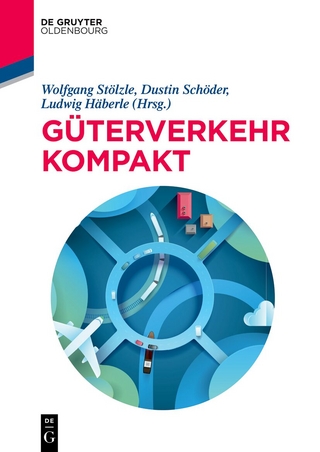
The Highly Effective Office
CRC Press (Verlag)
978-1-138-34453-2 (ISBN)
The Highly Effective Office covers the transformation journey required to change the culture in the workplace from processes that suffer from functional separation and "silo-ed" departments to efficient and integrated systems. Most office processes have evolved into separate and autonomous stand-alone functions that are sub-optimized. The result is added wastes in the processes, and the customers are often the first to notice. The wastes parallel the manufacturing floor wastes and deserve the same attention for identification and removal. Yet, the culture of the office is predisposed to work by a separation of duties. Roles and responsibilities are not aligned around processes. The same type of dramatic transformations that were enabled on the concrete factory floor are needed in carpeted offices.
This book describes methods to transform the value streams in the office and administrative areas of organizations, and it outlines why Lean works just as well in the office as it does in manufacturing. Wastes typically reach 50% of the process effort, and these processes are ripe for improvement. Throughout the book, waste removal in office processes are fully illustrated with descriptions of applying Lean tools to achieve flow. Case studies from the corporations, non-profits, and higher education institutions demonstrate how various types of organizations have reached success by applying Lean principles to their processes.
Lean expert Timothy Schipper outlines the structural and leadership changes that are required to create a transformational journey for process change and continuous improvement. Leadership activities are outlined along with descriptions of how to assign ownership and responsibility for the changes inside the organization. Various leadership behaviors are explored that support and help to sustain the effort. Attention is given to how to start the journey, how to select projects and launch them with clear goals and objectives, and how to run successful workshops, as well as visual tools and techniques and educational content. Finally, and most importantly, a description of the mature Lean culture is offered to show how to embed process improvement into the organization.
Timothy Schipper is a graduate of Calvin College and the University of Michigan (Bachelor’s of Mechanical Engineering and Master’s of Science). His career has spanned 30 years and includes time as a tool designer, engineering educator, CAD specialist, senior product engineer, IT manager, and Lean expert, author, coach, and consultant. His teaching experience includes positions in the Engineering Department at Calvin College and in industry. He has led Lean transformations in the areas of office value streams, IT development, product development, new business initiatives, government agencies, and nonprofits. He currently works for Steelcase Inc. of Grand Rapids, Michigan, where he coaches leadership and teams in the areas of lean product design, Lean management systems, and business transformations. He is the founder of Lean Inspiration, which promotes Lean concepts to organizations and nonprofits through writing, educational classes, coaching, and workshops. Timothy served for 3 years as an officer on the Board of Directors of LPPDE, Inc., an international nonprofit group that promotes the exchange ideas and practices used in Lean development. Timothy is the co-author of Innovative Lean Development: How to Create, Implement, and Maintain a Learning Culture, Schipper & Swets, (Productivity Press © 2010), which explores how rapid learning cycles, knowledge management, and other Lean techniques can be applied in development. He has also written articles in AME Target Magazine, in Wikipedia (“Design for Lean Manufacturing”), and he has contributed material for other authors (Steve Bell, Katherine Radeka, and Durward Sobek). He speaks at North American and international conferences on the topics of Lean, innovation, and leadership. You can follow him on Twitter (@LeanInspirations) or on his blog (http://innovativeLean.wordpress.com).
Foreword by David Mann, PhD. Preface. Chapter 1 - Lean Culture in the Office. Chapter 2 – Wastes and Why Lean Works in the Office. Chapter 3 – Organizing for Lean Success. Chapter 4 – Getting Started: The Lean Office Initiative. Chapter 5 – Pre-Project Contracting and Scoping. Chapter 6 – The Anatomy of a Value Stream Mapping Workshop. Chapter 7 – Post-Value Stream Mapping Workshop Activities. Chapter 8 – Education - Learning and Practicing. Chapter 9 – Office Visuals and Space. Chapter 10 – The Mature Lean Culture. Chapter 11 – Sustaining What You Implement. Chapter 12 – Lean Strategy in the Office. Chapter 13 – Lean, Development, and Agile. Appendix A – Templates. Appendix B – Visual Board Samples.
| Erscheinungsdatum | 28.01.2019 |
|---|---|
| Zusatzinfo | 24 Tables, black and white; 58 Illustrations, black and white |
| Verlagsort | London |
| Sprache | englisch |
| Maße | 156 x 234 mm |
| Gewicht | 576 g |
| Themenwelt | Wirtschaft ► Betriebswirtschaft / Management ► Logistik / Produktion |
| Wirtschaft ► Betriebswirtschaft / Management ► Unternehmensführung / Management | |
| ISBN-10 | 1-138-34453-2 / 1138344532 |
| ISBN-13 | 978-1-138-34453-2 / 9781138344532 |
| Zustand | Neuware |
| Haben Sie eine Frage zum Produkt? |
aus dem Bereich


